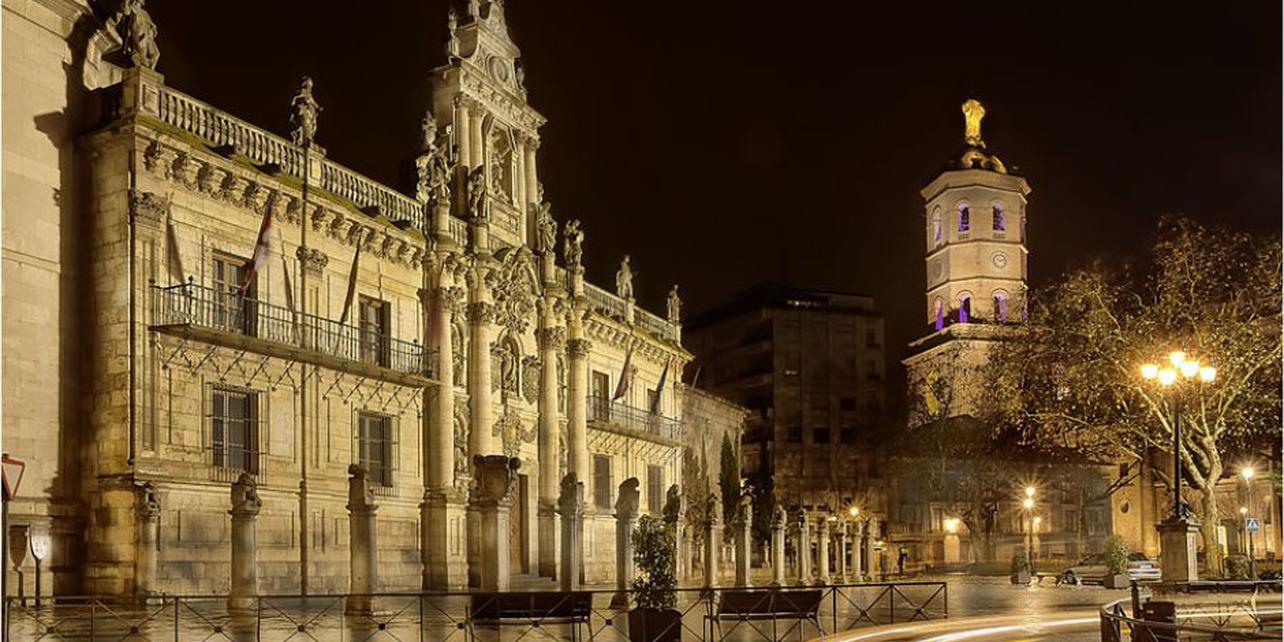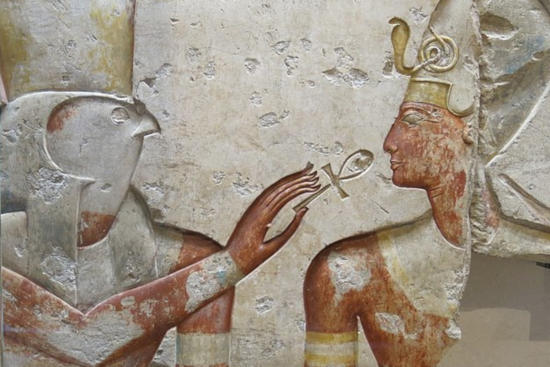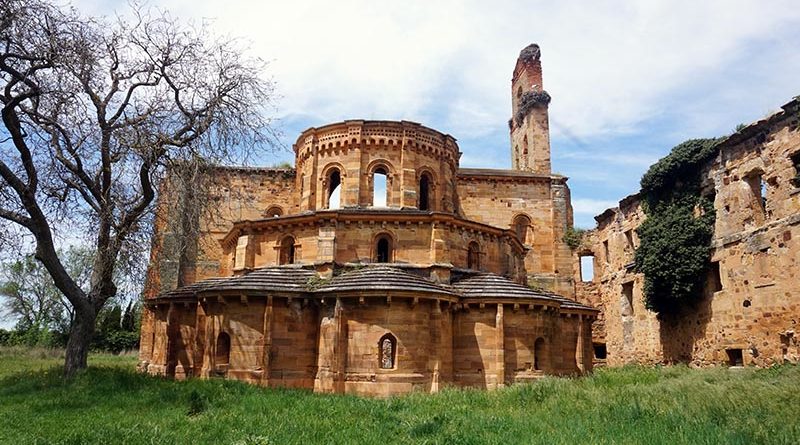If you are using Chrome, click the red hand button at the top right of the screen:

Then select: Don't run on pages on this site
If you do it correctly, the red hand will turn to green and you will no longer see this message.

Spain is not the better country for a vampyre to live in. There is too much sun, specially in spring-summer days. When humans, -they call themselves "tourists"-, go to the beach, expose their bodies to sun, get darken their skins and, silly of them, prepare their bodies for future possible skin cancer, we -vampyres- suffer another kind of inconveniences. I, particularly, detest Sun, the excess of light, and the little nights hours. Fucking Summer Solstice! Fucking Summer St. John's Day!
In summer time I feel weaker. At home, I use to lower the blinds from all my windows...maybe I only let pass a light Sun ray. I need to sleep more hours and, of course, to hydrate more. Moreover, I reduce my social life and I need to be alone more time. Sometimes I profit reading alone at home or writting in a repairing intimacy that hope the autumm comes again as quickly as possible.
The second inconvenience is the colour clothes -and, for me, an important one-. Wearing black cloths in Spain in summer is like looking a 1950s widow -board included-.
Fucking Summer Solstice! Fucking Summer St. John's Day!
Years ago, my husband and I was considering seriously to emigrate to Iceland to work and live there. There were two reasons for that: 1st, he loves Icelandic music in general, and Björk music in particular. 2nd, icelandic weather. Having a long winter and a light summer sounds great. Moreover, I like the comunity icelandic sense and the most serious present democracy: you know, Iceland was the only country in the world that arrested de Banks directors because of the 2008 Financial Crisis? Another questions like Ecology, Equalty and Minorities Protection make us to love that country that we visited in our 2016 summer holidays.
But, at last, we decided not to move. I suppose at the end, it's hard to leave our friends, family, our home, our culture, our past.
So here I am, in my summer-hibernation.
Fucking Summer Solstice! Fucking Summer St. John's Day!

Ave!
I have just ordered a Legacy Ankh, a special version of the bladed ankh, the sigilium that represents the virtues, teachings, traditions, culture and philosophy known as the Black Veils. Some of the Black Veils include virtues like Immortality, Romance, Elegance, Seduction, Apotheosis, Music, Art, Decadance, Nightside, Dayside, Unity, Family, Magick, Dance, Civility, Hospitality, Honor, Diversity, Chivalry, Decadance and Xepher.
For many vampyres, Ankh has become a symbol of identity. Beyond aesthetics or as an external complement, it is important for us to analyze the symbolic meaning that ankh has, so we will understand in a better way our vampiric nature.

Ancient Egipt
It seems that before, long before the Egyptian civilization, there was a precise moment in evolution where both, hominids and higher animals, shared the possibility of expressing in, at least, one interjection, a common moneme, that referred to a sensory experience: the sound caused by the explosion of air outward or "aspiration". That sound allowed to verify the existence of "life" when receiving it or "death" when not. It is the sound of life. Thus, the symbolism that the first hominids would give to this phoneme was directly linked to life in human being. At the point that, in the Egyptian culture, it was identified as the breath of God temporarily given to humans.
At Egypt, therefore, the divine breath, coming from the Sun god, Aton, was identified with an ideogram. In the Egiptian Middle Kingdom, the drawing of the solar disk, crossed by horizontal lines, signifies the breath of life. This ideogram is an abstraction of the solar disk and the rays it emits, seen by the person who receives them. A simple and schematic interpretation of the vision of man, who receives the beneficial influence. This ideogram, pronounced with the sound of the phoneme "Fricativo-Velar-Deaf", was represented by the digraph "KH". It was the ideogram of the breath of life
That simple ideogram, a beneficial vital influence representation, later evolved and materialized into a new object that resulted in the ankh phonogram. The solar rays, which until then were intangible and only belonged to the Solar God (represented by the disc), was then materialized in the symbol of the key received from the solar disc itself, the symbol of the Ankh, the key to the breath of life.
However, the new representation of the breath of God, kept the characteristic sound of the breath, collected by the digraph "KH", which the new hieroglyph kept. Its hieroglyphic sign means life and is a symbol that points to the divine and eternal existence.
The Ankh is represented as an object, with direct origin from the solar disk, which is offered by the gods to the pharaoh, so that he can administer the breath of life among men.
Its shape especially collects this characteristic, due to the end that is offered. It appears as a ray of light, the extension of the solar ray that emanates from the divine disk. At the opposite end, where it is picked up, it appears as a key that is grasped and that determines property and use
The Ankh, the key of life, appears in the hands of the gods as a symbol of eternal life and as a key to the mysteries of nature, so for the human, the microcosm, is the key to the macrocosm. It also usually appears in the hands of the gods, in front of the king's nose, granting him the "breath of life" or, as Ankh-shaped jets of light, which flow over the king during ritual purification.
As a symbol of the eternal vital force, it was represented on the walls of temples in steles and appears, engraved in stone, on the lintels of the doors of the temples, thus indicating the places where contact between men and gods takes place. The Ankh is no longer just the symbol of the divine breath that allows men to live on earth and becomes a sign of divinity among men, marking, with its presence in temples: stelae, low and high reliefs, such as the center of a motif decorated with staffs of Anubis and sailing on the Solar Boat.
As an amulet, the Ankh would be credited with the ability to attract and conserve the breath of life and vital forces. There are many engravings and sculptures in which a god or goddess appears with the cross in his hand, approaching it to the nose of some other god or protégé. With this gesture, the bearer of the cross-shaped key breathed life into the other, who in turn received it through his nostrils.
As a mark of the influence of the divine breath, through the digraph KH, there are important compound words that have the phoneme as a reference to the god.
Ancient Greece.
But let's take a leap to the Mediterranean and get closer to Greece. The Egyptian "kh" sound was picked up by the Greek letter Chi. The cross of the Greek letter Chi assumed the sacred value that the Ankh hieroglyph had in Egypt, and its use, in some Greek words, made reference to the sacred breath of the Egyptian tradition. The Greek Chi represents the "writing of light by light itself, the sign of its passage, the manifestation of its movement and the affirmation of its reality. It is its true signature."
There is a concept mentioned by the first Ionian philosophers of the School of Miletus, called arkhé, considered as the original common principle to all things, origin and foundation of reality; at the same time source from which everything arises, and end or end towards which everything goes or returns. The arkhé as a philosophical concept, however, uses the KH digraph to link its meaning with the question of the original principle, the primary cause, the cause of causes, the arkhé, which is the origin of all things. The root of arkhé expresses that God is the beginning of everything.
At the beginning of the Gospel of Saint John he writes: "In arkhé én o lógos" In this way he writes about the Unnamable. About the cause of all causes. This page is not one more among the hundreds of pages of the Bible, but it is the most admired and the most read and its symbolism would give for a specific post... Isn't true that Masonic lodges celebrate their meetings with the opened Bible at this page, among other symbols? So extraordinary was the admiration for this page in which the origin of everything created in the word is explained, the word is identified with God. It has been translated into Latin in an interested way by: "In principio erat Verbum", and then into English in an even more interested way: "In the beginning was the Word" That "Word", that "Verbum", is Arkho. "In arkhé en o lógos"
The Tetragrammaton of Arkho is the most repeated stone sign along the roads of Europe. Its presence shows the same as in other cultures: (in entrance lintels to the temples, in tombstones and in reliefs), the key of the Breath of Life.
But let's go back to Egypt, now after Christ. From the II century AD. C., with the spread of Christianity in the Nile Valley, syncretisms occurred: one of them was the adoption by Egyptian Christians (later called Copts) of the "ankh" symbol as a form of Christian cross. It would be again in the Nile Valley where two powerful symbols merge: the Christian Cross, crossing of horizontality (or materiality of the human being), and verticality (or spiritual dimension), and the Egyptian Cross.
The missions of Christian monks who set out from Egypt since the third century most likely spread the ancient symbol to distant places. This would have originated the Irish cross, on the one hand, and the Armenian cross on the other, both with a circle in the center.
Goth symbol
Let's take another step - of many centuries - and ask ourselves why the Gothics use the ankh. It is said that the Siouxsie Sioux group were who began wearing ankhs, openly acknowledging that they only wore them for aesthetic reasons. Ankhs have been seen as a logo for the role-playing game "Vampire the Masquerade". Likewise, in the Neil Gaiman comic, it is the seal of the older sister of Morpheus.
We would conclude by saying that, among humans (those poor humans) the ankh is used mainly for aesthetics and perhaps it is given the meaning that best suits the Gothic movement: the key to eternal life, the one that does not end with death, or the key that opens doors. of death. Ok, but... and among vampyres?
Vampyre symbol
In any case, and as a symbol that it is, we should analyze, within ourselves, what the ankh awakens in our subconscious, as it is probably the best way to interpret the symbolism if we understand that it can lead us to universal concepts.
In more recent times, the Ankh has been modified and stylized to emphasize a dagger-like or fang-like quality. The Kemetic (ancient Egyptian) symbol for life and vitality, often interpreted to mean immortality. The Ankh came to be heavily used by Vampyres due to it’s original meaning, not due to an obsession with immortality. Egyptian Gods were depicted holding the Ankh to represent that they were the source of life. Vampyres wear an Ankh to symbolize that they take in life, be it energy or blood.
While the traditional style of Ankh is still popular among Kin, many variants designed specifically for Vampyres have been marketed over the past few decades. Its resurgence began when the counterculture of the 1960s stirred a greater interest in ancient religions. In the 21st century it is the most widely recognized symbol of African origin in the Western world, and it is sometimes used by people of African descent in the United States and Europe as a symbol of African cultural identity. The ankh also symbolizes Kemetism, a group of religious movements based on the religion of ancient Egypt. The sign is also popular in the goth subculture, being particularly associated with vampires, because an ankh pendant appears prominently in the 1983 vampire film The Hunger.
Eternally,
Vormel
Let me tell you a few words about the ruins of an Abbey you can find near Zamora, Spain, my formal born-city. I'm talking about Moreruela Abbey:

Moreruela Abbey (Monasterio de Santa María de Moreruela) is a former Cistercian monastery in the province of Zamora in Castile and León, Spain, close to the left bank of the Esla, a tributary of the Duero.
Oficial History
Before the time of the Cistercians, a monastery of the Benedictines already stood on the site, founded for them either by the Asturian King Alfonso III or by Saint Froilan, which under the patronage of Alfonso VII the Cistercians took over. The date of this takeover is often put at 1131/1133, which would make Moreruela the earliest Cistercian foundation in Spain. There is however an alternative theory which dates the establishment of the Cistercians here at 1143.
Moreruela was a daughter house of Clairvaux, and in its turn was the mother house of Nogales Abbey, also in Spain (1164), and Aguiar Abbey in Portugal (1165).
There are many remains of the abbey, although in ruins, particularly the Romanesque abbey church in the shape of a Latin cross 63 metres long, the construction of which was begun about 1170 and finished in the second quarter of the 13th century. The apse at the east end is completely preserved and has a vaulted ambulatory round a rectangular choir, with seven chapels as at Clairvaux. Also preserved are the walls of the 27 metres wide transept and of the northern aisle, and parts of the nave, once comprising three aisles and nine bays. Of the conventual buildings to the north of the church, the chapter house among others remains, although partly reconstructed.
Real History.
As far as I remember, there was a Vampyre Community at Moreruela Abbey, during Middle Age. As the ancient Castile and Leon Kingdoms were busy fighting against Arabian domination, vampyres realized we could live pacefully in a Cistercian Abbey. For the rest of people and for the Human King, we only were devoted monks dedied to pray and to worshipping. Inside the Abbey we were vampyres dedied to study ocultims, vampyre nature, human nature and... to be happy.
All that changed... but that's another story.
COMMENTS
-